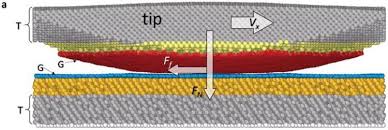In recent years, there has been a growing emphasis on sustainability in all aspects of our lives, and interior design is no exception. Green design, also known as sustainable design, is an approach that prioritizes environmental responsibility, health and well-being, and social consciousness. In this article, we will delve into the concept of green design and explore its significance in shaping the future of sustainable interiors.
Green design is a holistic approach that seeks to minimize the negative impact of interior design on the environment, while also promoting human well-being and social equity. It goes beyond aesthetics and functionality, taking into consideration the entire life cycle of materials and products used in interiors. By incorporating sustainable practices, designers can create spaces that are not only visually appealing but also contribute to a healthier planet and improved quality of life for occupants.
Sustainability in interiors refers to the practice of designing, constructing, and operating spaces in a manner that reduces resource consumption, minimizes waste generation, and promotes a healthy indoor environment. It involves making conscious choices throughout the design process to ensure that the environmental, social, and economic impacts are carefully considered.
Reducing Environmental Footprint: This principle focuses on minimizing energy consumption, water usage, and waste generation throughout the lifecycle of a project.
Using Sustainable Materials: Green design prioritizes the use of renewable, recycled, and locally sourced materials that have a lower impact on the environment.
Promoting Indoor Air Quality: The selection of low-emission materials, adequate ventilation, and proper indoor air quality management are vital in creating healthier interior spaces.
Enhancing Energy Efficiency: Green design incorporates energy-efficient lighting, appliances, and HVAC systems to reduce energy consumption and lower carbon emissions.
Embracing Biophilic Design: This principle involves integrating elements of nature into interior spaces, promoting a connection to the natural environment and enhancing well-being.
Green design plays a crucial role in addressing the environmental challenges we face today. By adopting sustainable practices, interior designers can contribute to the reduction of carbon emissions, depletion of natural resources, and pollution. The use of Eco-friendly materials and energy-efficient systems can significantly minimize the ecological footprint of interior spaces.
Interior spaces have a direct impact on our health and well-being. Green design focuses on creating healthy environments by considering factors such as indoor air quality, natural lighting, and the use of non-toxic materials. By reducing exposure to harmful substances, promoting good indoor air quality, and incorporating biophilic elements, green design contributes to occupant comfort, productivity, and overall well-being.
Green design also addresses social responsibility by considering the social and economic impacts of design choices. Ethical sourcing, fair trade practices, and supporting local artisans and communities are integral aspects of sustainable interior design. By prioritizing social equity, green design aims to create spaces that benefit both the occupants and the broader community.
A significant aspect of green design is the use of sustainable materials and products. By consciously selecting environmentally friendly options, designers can make a positive impact on the environment and human health.
Choosing materials with a low environmental impact is crucial. Opting for renewable materials such as bamboo or cork flooring, reclaimed wood, or recycled glass not only reduces resource depletion but also adds unique character to interior spaces.
Green design promotes the use of low-impact and non-toxic materials to minimize indoor air pollution and promote better indoor air quality. Selecting paints, adhesives, and finishes that have low volatile organic compound (VOC) content ensures healthier living environments.
Energy-efficient appliances and lighting solutions significantly contribute to sustainability in interiors. Incorporating energy-saving appliances, LED lighting, and daylight harvesting techniques can reduce energy consumption and lower utility costs.
Efficient heating, ventilation, and air conditioning (HVAC) systems play a vital role in energy conservation. Proper insulation, regular maintenance, and the use of programmable thermostats help optimize energy usage and create comfortable indoor environments.
Well-insulated interiors and energy-efficient windows contribute to temperature regulation, reducing the need for excessive heating or cooling. High-performance glazing options can help optimize natural lighting while minimizing heat gain or loss.
Integrating smart energy management systems allows for better control and monitoring of energy consumption. Occupancy sensors, automated lighting controls, and smart power strips are examples of technologies that promote energy efficiency and reduce wastage.
Incorporating elements of nature and biophilic design principles can have a profound impact on the overall well-being of occupants and the sustainability of interiors.
3 Bedroom House For SaleMaximizing the use of natural light not only reduces the reliance on artificial lighting but also improves the connection to the natural environment. Strategic placement of windows, skylights, and light shelves can optimize natural light penetration while minimizing glare and heat gain.
Introducing indoor plants and living walls brings nature indoors and improves air quality. Plants not only filter pollutants but also create a sense of well-being and connection to the natural world.
Green design extends beyond the interiors to include sustainable landscaping practices. Incorporating native plants, water-efficient irrigation systems, and permeable surfaces in outdoor spaces reduces water consumption and promotes biodiversity.
Green design extends to the selection of furniture and textiles, ensuring that they are sourced and produced sustainably.
Choosing furniture made from sustainably sourced or recycled materials, such as FSC-certified wood or recycled plastic, helps minimize environmental impact. Additionally, opting for furniture pieces with minimal chemical treatments and durable construction promotes longevity and reduces waste.
Promoting fair trade and supporting artisans and local communities is an essential aspect of green design. Selecting furniture and textiles produced under fair labor practices and ensuring a transparent supply chain fosters social responsibility.
When selecting textiles and upholstery, considering sustainable options such as organic cotton, linen, or recycled fibers helps reduce the environmental impact of the interiors. Choosing fabrics with low chemical treatments and dyes also contributes to better indoor air quality.
When selecting textiles and upholstery, considering sustainable options such as organic cotton, linen, or recycled fibers helps reduce the environmental impact of the interiors. Choosing fabrics with low chemical treatments and dyes also contributes to better indoor air quality.
Green design has a significant role to play in commercial spaces as well. Businesses can prioritize sustainability by incorporating energy-efficient systems, promoting recycling and waste reduction, and creating healthy work environments. Green building certifications, such as LEED (Leadership in Energy and Environmental Design), can be pursued to demonstrate a commitment to sustainability in commercial interior design.
While green design presents numerous benefits, it may also come with challenges. These include higher upfront costs, limited availability of sustainable materials, and the need for specialized knowledge. However, by collaborating with knowledgeable professionals, staying informed about sustainable practices, and emphasizing long-term benefits, these challenges can be overcome, allowing for the successful implementation of green design principles.
Green design is not just a passing trend; it is the future of sustainability in interiors. By embracing green design principles, interior designers can create spaces that not only promote the well-being of occupants but also contribute to the preservation of the environment. From using sustainable materials and enhancing energy efficiency to integrating nature and practicing social responsibility, green design offers endless possibilities for creating healthier, more sustainable, and visually appealing interior spaces.
No, green design principles can be applied to both residential and commercial interiors. The focus on sustainability, energy efficiency, and occupant well-being is relevant to all types of interior spaces.
While green design may involve higher upfront costs, it can result in long-term cost savings. Energy-efficient systems, reduced maintenance requirements, and improved durability of sustainable materials can lead to lower operating expenses over time.
Yes, green design principles can be applied to existing interiors through renovation and retrofitting. By incorporating sustainable materials, enhancing energy efficiency, and improving indoor air quality, existing spaces can be transformed into more sustainable environments.
Yes, certifications such as LEED (Leadership in Energy and Environmental Design) provide recognition for green building practices, including sustainable interior design. These certifications serve as benchmarks for sustainable design and can enhance the market value of the space.
Researching suppliers, manufacturers, and organizations dedicated to sustainability can help you identify sustainable materials and products for your interior design projects. Look for certifications, such as Forest Stewardship Council (FSC) for wood products or Cradle to Cradle for overall sustainability.
“Learn about the significance of inclusivity in design as we discuss strategies and ideas for Inclusive Design: Making Spaces Accessible for All, fostering spaces that cater to the needs of diverse individuals.”










.jpg)

You are welcome to share your ideas with us in comments.